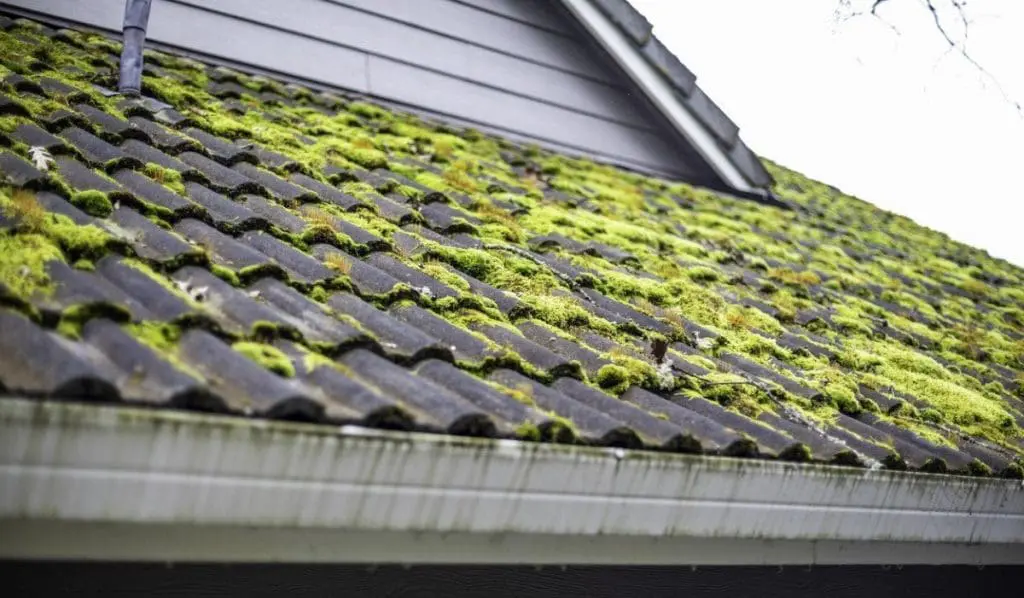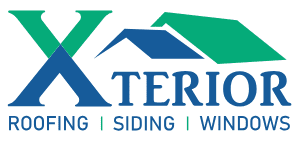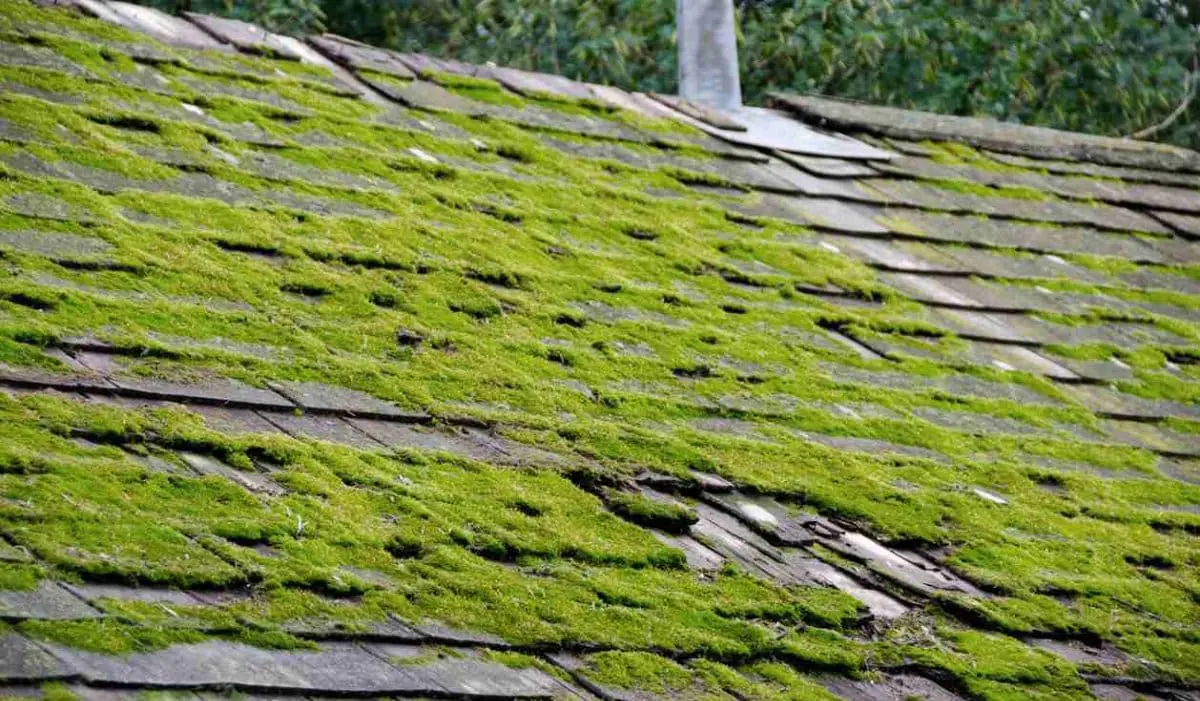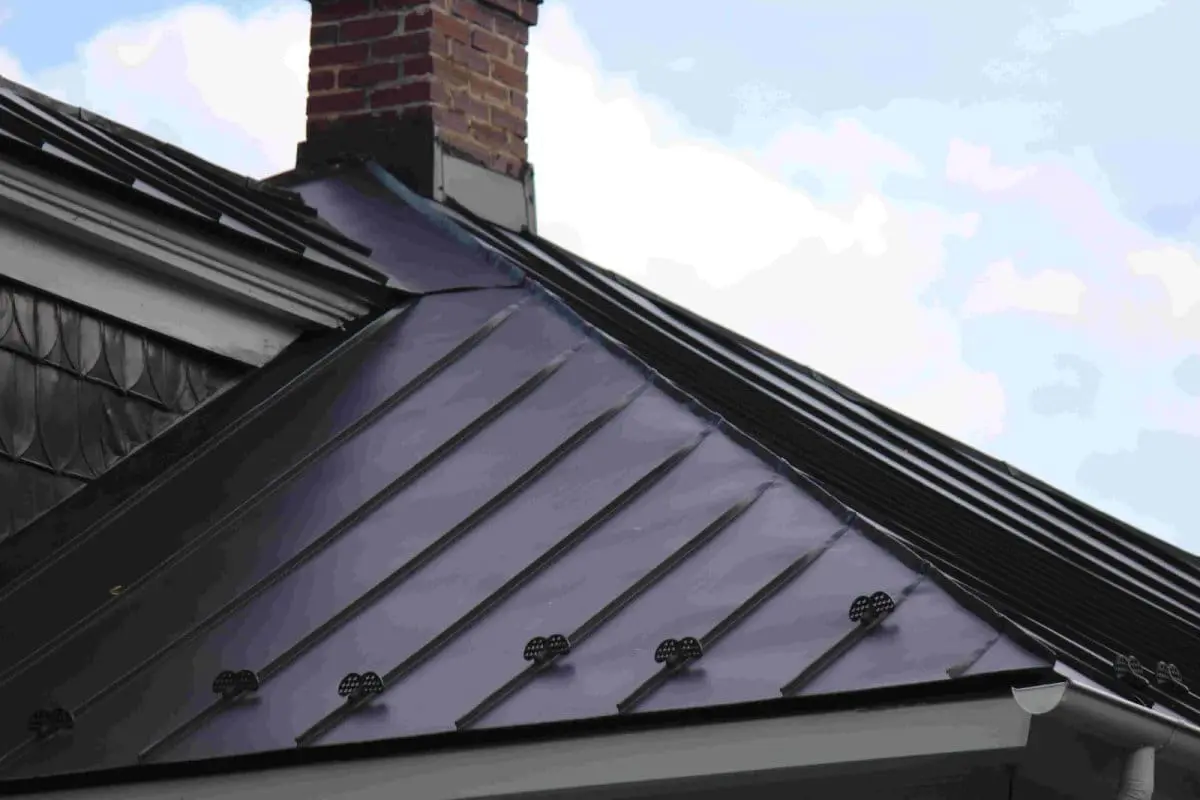Understanding the Impact of Moss and Algae on Your Roof and How to Protect Your Home in High Point, NC
When it comes to maintaining the health of your roof, many homeowners focus on obvious threats like leaks, storm damage, and wear from sun exposure. However, moss and algae growth can be just as damaging, especially in areas like High Point, NC, where the climate can foster these unwanted invaders. Understanding how moss and algae can affect your roof, how to remove them, and what you can do to prevent future growth is crucial for keeping your roof in top shape.
In this article, we’ll dive into the differences between moss and algae, how they affect your roof, and the steps you can take to protect your home from their negative effects. Plus, we’ll talk about the best ways to work with a trusted roofing contractor to handle moss and algae issues.

What is the Difference Between Moss and Algae on a Roof?
At first glance, moss and algae might seem similar, but they are very different organisms with distinct characteristics.
- Moss is a small, non-vascular plant that thrives in damp, shady environments. It attaches itself to the roof’s surface and grows in thick clumps. Moss can cause significant damage to roofing materials as it holds moisture against the roof, which can lead to the deterioration of shingles and underlayment.
- Algae, on the other hand, is a type of microorganism that grows in thin, dark patches, often giving your roof a streaky appearance. Algae usually appear as dark stains and can be found in warmer, more humid climates. While algae might not directly damage roofing materials, it can cause unsightly discoloration that lowers the aesthetic appeal of your roof.
Both moss and algae are more than just cosmetic issues — they can lead to more serious roof damage if not addressed promptly.
Can Moss and Algae Damage My Roof?
Yes, both moss and algae can cause significant roof damage if left untreated.
- Moss can lift and displace shingles as they grow, which exposes your roof to potential water infiltration. The roots of moss also penetrate roofing materials, creating small cracks where water can seep in. Over time, this can lead to leaks, rotting wood, and even structural damage to your roof.
- Algae may not cause physical damage like moss, but the stains and streaks it leaves behind can trap moisture, which can degrade the roofing material over time. Algae can also spread to other parts of your home, including the gutters, causing potential clogs and water backup.
The longer moss and algae are allowed to grow on your roof, the more damage they can cause, so it’s important to act quickly when you notice them.
7 Ways Moss and Algae Cause Damage to Roofs
Moss and algae may seem harmless, but they can cause significant damage to your roof over time. Here are some of the ways they can affect the integrity of your roofing system:
- Moisture Retention
- Moss retains moisture, which can lead to water pooling on your roof. This trapped moisture can seep into shingles, underlayment, and roof decking, promoting wood rot, mold, and mildew growth. Over time, this can compromise the roof’s structural integrity.
- Shingle Lifting and Curling
- As moss grows, its roots penetrate beneath the edges of shingles, causing them to lift or curl. This not only weakens the roof but also exposes the underlayment to the elements, making it vulnerable to leaks.
- Clogged Gutters and Downspouts
- Moss and algae can break off in chunks and accumulate in gutters and downspouts, leading to blockages. Clogged gutters prevent proper water drainage, which can result in water damage to the roof, fascia, and siding.
- Discoloration and Aesthetic Damage
- Algae leave unsightly dark streaks on your roof, which can lower the curb appeal of your home. This discoloration is often tough to remove and may make your roof look older than it actually is.
- Weakened Roofing Materials
- The growth of moss and algae can break down roofing materials over time. Asphalt shingles, for instance, can degrade faster under the constant moisture exposure caused by moss, leading to more frequent roof repairs or even premature roof replacement.
- Increased Risk of Leaks
- As moss and algae continue to grow and spread, they create gaps in the roofing system where water can penetrate. This increases the likelihood of leaks, which can damage the interior of your home, leading to costly repairs.
- Premature Roof Aging
- The continuous growth of moss and algae accelerates the aging process of your roof. Instead of lasting the typical lifespan of 20-30 years, a roof with moss and algae growth may begin to deteriorate much sooner.
By understanding how moss and algae damage roofs, homeowners can take proactive steps to prevent growth and extend the life of their roofing system.
How Do Roofing Contractors Remove Moss and Algae from My Roof?
Removing moss and algae from your roof requires a gentle yet effective approach. Here’s what a professional roofing contractor might do to treat your roof (it’s possible that these repair solutions won’t work and a full roof replacement will be needed):
- Roof Inspection: A thorough inspection of your roof will be the first step. The roofer will assess the extent of the moss and algae growth, check for signs of damage, and determine the best course of action for removal.
- Cleaning Solution: For algae removal, contractors often use a mixture of water and mild detergents or specialized roof-cleaning solutions that won’t damage the shingles. Moss requires a slightly different treatment, with some contractors using moss-killing solutions to break down the moss and make it easier to remove.
- Manual Removal: A roofing contractor might gently scrape off the moss using soft-bristle brushes to avoid damaging your shingles. If the moss is particularly thick, they may also use a pressure washer, but only on a low setting to prevent damage.
- Preventive Measures: Once the moss and algae are removed, your roofing contractor may apply a protective coating or solution to help prevent future growth. This could include the installation of zinc or copper strips that release minerals that inhibit moss and algae growth.
Professional removal ensures your roof stays intact, and your roofing materials remain undamaged.
How Often Should I Inspect My Roof for Moss and Algae?
A regular roof inspection schedule is crucial for spotting moss and algae growth early. For most homes, you should have your roof inspected at least once a year. However, if you live in a climate that’s particularly damp or shaded, it may be necessary to inspect your roof more frequently — particularly in the spring and fall when moss and algae are most likely to grow.
If you notice dark streaks, patches of green moss, or any unusual discoloration on your roof, don’t wait for your annual inspection. Call a local roofing contractor in High Point, NC, to evaluate the condition of your roof.
Does the Type of Roofing Material Affect Moss and Algae Growth?
Yes, the type of roofing material can impact how easily moss and algae can grow. Some roofing materials are more susceptible to these issues than others:
- Asphalt Shingles: These are the most common roofing materials and are highly prone to algae growth. Asphalt shingles often have a porous surface that traps moisture, making them ideal for moss and algae. However, newer asphalt shingles may come with algae-resistant coatings that help prevent growth.
- Wood Shingles and Shake: Wood roofing materials are more likely to harbor moss because they can absorb moisture. While they provide a natural look, they require regular maintenance to prevent moss buildup.
- Metal Roofing: Metal roofs are highly resistant to moss and algae growth due to their smooth, non-porous surface. However, metal roofs may still experience discoloration if moss or algae do grow, though it tends to be easier to clean than on asphalt or wood roofs.
- Clay or Concrete Tiles: These materials are less susceptible to moss and algae growth, but they can still experience staining over time.
What Health Risks Are Associated with Moss and Algae on Roofs?
Moss and algae may not only harm your roof — they can also pose potential health risks. Moss can harbor mold and mildew, which can release spores into the air that aggravate respiratory conditions like asthma and allergies. Algae, while not directly harmful, can create slippery surfaces on walkways and driveways, which could lead to accidents.
By addressing moss and algae growth on your roof promptly, you can reduce these health risks and maintain a safer environment for your family.
How Does Climate Influence the Growth of Moss and Algae on Roofs?
Climate plays a significant role in the growth of moss and algae. In areas with high humidity, frequent rainfall, and cooler temperatures, such as High Point, NC, moss and algae are more likely to thrive. Roofs that are shaded by trees or structures are particularly prone to moss and algae growth due to the damp, dark conditions that promote growth.
If you live in an area with a wet climate, it’s important to stay on top of roof inspections and maintenance to prevent moss and algae from taking hold.
Why a Single Roof Repair Might Not Be Enough: When Full Roof Replacement is Unavoidable
While a single roof repair may seem like an immediate solution to the visible damage caused by moss and algae, it’s often not enough to restore the roof’s full integrity. Here’s why a roof replacement may be the more practical and cost-effective solution in many cases:
1. Underlying Structural Damage
- Moss and algae growth can cause hidden damage to your roof structure that isn’t immediately visible. Over time, the moisture trapped by moss and algae can lead to wood rot, mold growth, and weakened roofing materials. A simple repair might address visible issues like missing shingles or leaks, but it won’t resolve the hidden damage to the roof deck, trusses, or underlayment. This hidden damage could worsen over time, leading to more expensive repairs or a complete roof collapse if left unchecked.
2. Compromised Roofing Materials
- The constant moisture exposure from moss and algae can break down roofing materials, particularly asphalt shingles. Even if moss and algae are removed, the shingles may be so weakened by prolonged exposure that they can’t be adequately repaired. This damage is often irreversible, and replacing the roof entirely can ensure that your home remains protected.
3. Recurring Issues
- If moss and algae have had a chance to grow and cause significant damage, a repair may not prevent further growth or future issues. Unless the underlying causes of the moss and algae (such as poor ventilation, roof pitch, or shade) are addressed, new growth is likely to appear soon after a repair. Roof replacement allows for the installation of modern materials that are more resistant to algae growth and the implementation of better roof ventilation systems to prevent moisture buildup.
4. Extended Lifespan of Your Home
- While repairing a roof may temporarily fix the problem, it doesn’t extend the lifespan of your roofing system the way a complete replacement can. Replacing your roof ensures that you start with a fresh, durable roofing system that can handle future weather conditions, avoid additional maintenance costs, and increase your home’s resale value.
5. Comprehensive Protection
- A roof replacement offers a comprehensive solution to the damage caused by moss and algae. It addresses not just the surface issues but also any underlying problems that could lead to more extensive damage later on. With a new roof, you gain peace of mind knowing that you’re protected from leaks, water damage, and other potential hazards.
6. Cost-Effectiveness in the Long Run
- While roof replacement may seem more expensive upfront compared to minor repairs, it can actually save you money in the long run. Constant repairs due to recurring moss and algae issues can add up over time. A roof replacement is a one-time investment that protects your home for many years, sparing you from costly repairs down the road.
7. Improved Energy Efficiency
- Older roofs that have been damaged by moss and algae may have compromised insulation and ventilation, leading to higher energy bills. A new roof can improve your home’s energy efficiency by providing better insulation and ventilation, reducing heating and cooling costs over time.
If you’ve experienced significant damage from moss and algae growth, a roof replacement may be necessary to restore the full integrity of your roof. By opting for a replacement, you not only protect your home but also ensure that your roof remains functional and efficient for many years to come.
Finding a Local Roofer in High Point NC for Moss and Algae Roof Care

If you’re dealing with moss and algae on your roof, it’s best to work with an experienced roofing contractor who understands the unique needs of homes in High Point, NC. Xterior LLC is your trusted local roofer, specializing in roof inspections, maintenance, and cleaning services to keep your roof in top shape.
Our team of experts is ready to help you with moss and algae removal, and we offer preventative solutions to ensure that your roof stays healthy year-round. Contact us today to schedule your free, no-obligation estimate!
Don’t let moss and algae take a toll on your roof. Call Xterior LLC today at 336-223-6434 or visit our Facebook page to schedule a roof inspection and get your free estimate. Protect your roof and your home with our expert roofing services in High Point, NC!
Frequently Asked Questions
What is the difference between moss and algae on a roof?
Moss appears as thick, green clumps on your roof and can grow between shingles, while algae typically appear as dark streaks. Both can cause damage over time if not properly managed.
Can moss and algae damage my roof?
Yes, moss and algae can cause significant roof damage. Moss traps moisture, leading to rotting and lifting of shingles, while algae can discolor your roof and weaken its structure over time.
How do roofing contractors remove moss and algae from my roof?
Roofing contractors use special cleaning solutions, pressure washing, and safe removal techniques to eliminate moss and algae without causing further damage to the roof.
How often should I inspect my roof for moss and algae?
It’s recommended to inspect your roof at least twice a year, particularly after heavy rainfall, to catch moss and algae growth early before they cause significant damage.
Does the type of roofing material affect moss and algae growth?
Yes, certain roofing materials, like wood shakes and asphalt shingles, are more prone to moss and algae growth. Metal roofs and tiles are less likely to attract these growths due to their smooth surfaces.
What health risks are associated with moss and algae on roofs?
Moss and algae on roofs can lead to mold growth, which may contribute to respiratory issues and allergies for homeowners. Additionally, moss can make roofs slippery, posing safety risks.
Why might a single roof repair not be enough to fix moss and algae damage, and why should I consider a roof replacement instead?
While a single repair might address visible issues like leaks or missing shingles, it often doesn’t fix underlying damage caused by moss and algae growth. Over time, the moisture trapped by moss and algae can lead to wood rot, mold, and weakened roofing materials. A repair may not prevent future growth or address hidden damage to the roof deck and structure. Roof replacement, on the other hand, ensures that your roof is fully restored with durable materials, eliminates recurring issues, and extends the lifespan of your home’s protection, making it a more cost-effective long-term solution.
Disclaimer:
The content in this blog is for informational purposes only and is intended to assist homeowners in understanding roofing, siding, windows, gutters, shutters, and general home improvements. Xterior LLC advises against attempting any of the tasks described here, as they require professional expertise. We do not assume liability for any injuries, damages, or losses resulting from DIY attempts. Always refer to the manufacturer of products for specific maintenance instructions.
By viewing this blog, you acknowledge and release Xterior LLC from any and all liability related to the use or misuse of the information provided.
Please note that Xterior LLC may not offer all the services discussed. Repairs, estimates, and inspections are priced based on availability, location, and time. All services, offerings, and prices are subject to change without notice.
For more information or to request services, please contact Xterior LLC directly.



